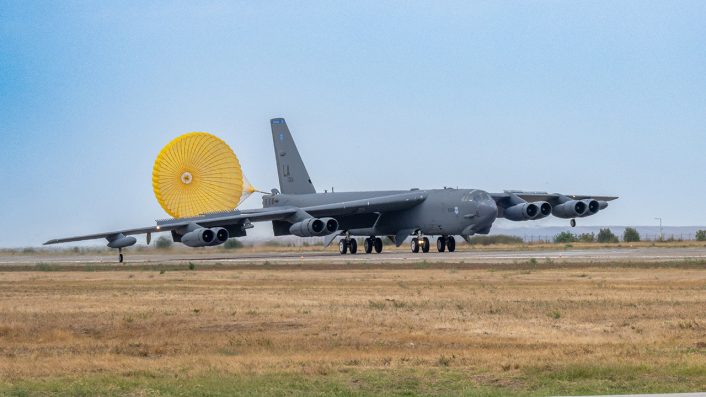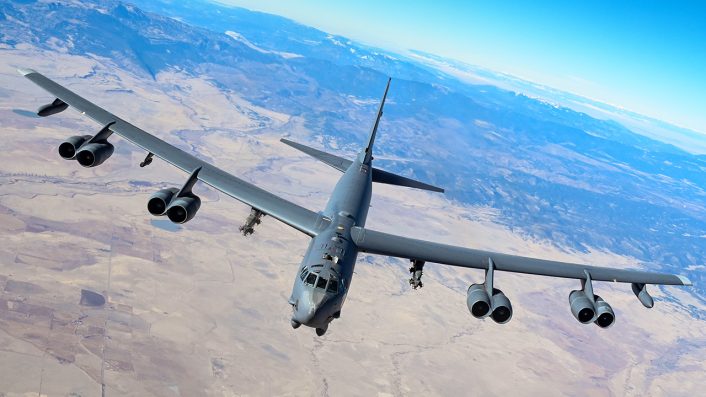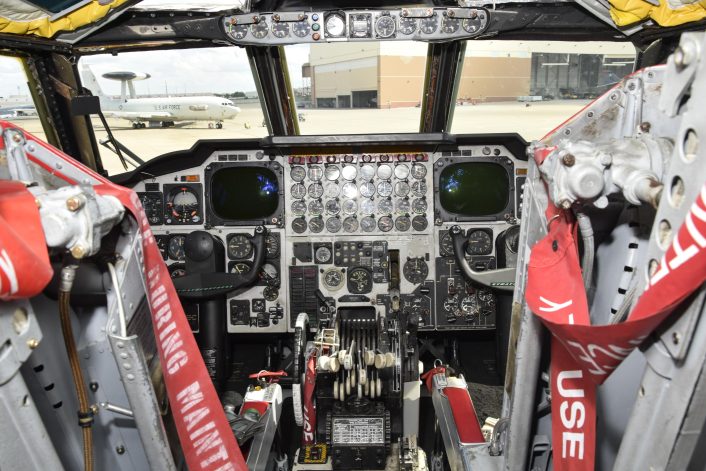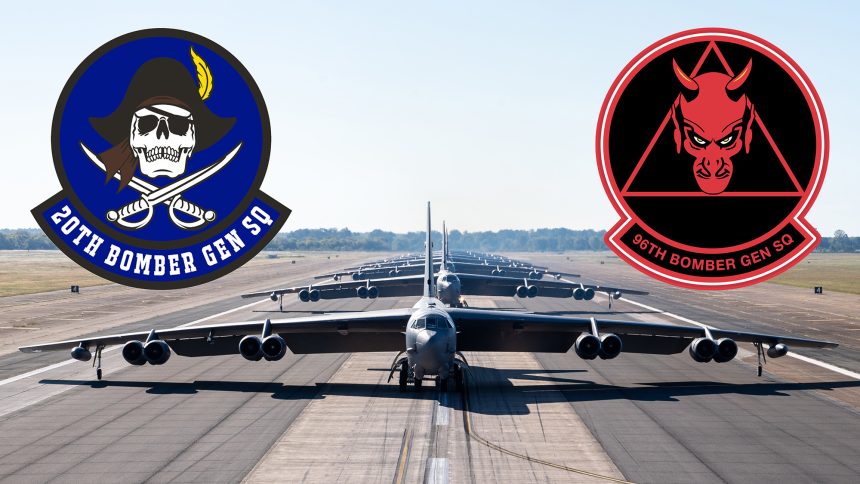The 20th and 96th Bomber Generation Squadrons were established to boost operational efficiency and flexibility.
On Aug. 22, 2024, the 2nd Bomb Wing established two new Bomber Generation Squadrons (BGSs), following the deactivation of the 2nd Aircraft Maintenance Squadron. This unit was restructured into the 20th and 96th BGSs as part of a mission-focused maintenance transformation designed to enhance operational efficiency and boost combat capabilities.
The BGS concept, originally developed by Maj. Ian P. Rohde, the outgoing commander of the 2nd AMXS, during his time at Air Combat Command, aims to revamp traditional aircraft maintenance squadrons by converting them into mission-specific generation units. These squadrons are organized, trained, and equipped to operate in any theater where bomber capabilities are needed to fulfill combatant commanders’ objectives.
A crucial element of the BGS model is the ability for these squadrons to function independently from their parent wing, enabling them to align more closely with their partnered operational bomb squadrons throughout deployment cycles.
“The current threat environment necessitates a shift away from static sanctuary bases where we typically concentrate large numbers of maintenance and munitions personnel,” Rohde said. “The future requires us to reorganize aircraft maintenance units into bomber generation squadrons.”
According to Rohde, this reorganization will allow operational wings to implement strategies that involve dispersing nuclear forces and conducting agile combat employment operations with conventional forces. This increased flexibility will enable bombers to integrate better with allies and partners, even in remote locations that might otherwise be unsuitable for bomber operations.

These changes are expected to standardize operations both at home and during deployments, fostering leadership development in junior personnel focused on aircraft production and maintenance generation, Rohde explained.
“Bomber Generation Squadrons will provide several critical capabilities to combatant commanders,” Rohde noted. “We will be able to cultivate leadership skills much earlier in service members’ careers. Our mission generation teams will operate under delegated mission command authorities, making our forces more agile, streamlined, and responsive, without relying on traditional maintenance group structures.”
This concept will be extended to other Air Force Global Strike Command bomber bases as the command continues to innovate and prepare for future challenges.
“Future conflicts will be highly contested, and we can no longer take air superiority for granted,” said Gen. Thomas Bussiere, Commander of AFGSC. “This new capability will equip our units to function independently without the need for extensive command hierarchies, while providing us greater flexibility in positioning our bombers. I firmly believe this will be a crucial factor in future warfare scenarios.”
2nd Bomb Wing
The 2nd Bomb Wing at Barksdale Air Force Base, Louisiana, operates three squadrons of B-52H Stratofortress bombers: the 11th Bomb Squadron, which serves as the training squadron, and the 20th and 96th Bomb Squadrons. Together, these squadrons enable the 2nd Bomb Wing to provide flexible and responsive global combat capabilities, either independently or alongside other forces. They also train all B-52 crews for Air Force Global Strike Command and Air Force Reserve, including the 307th Bomb Wing at Barksdale.
As the largest bomb wing within Air Force Global Strike Command and a key component of the historic 8th Air Force, the 2nd Bomb Wing comprises over 8,500 active-duty members, Air Force Reserve personnel, and civilians. It also includes around 26 B-52 Stratofortress aircraft.
According to its official website, the 2nd Bomb Wing boasts a history nearly as old as American air power itself, with its origins tracing back to World War I when it was formed by the American Expeditionary Forces as the first unit dedicated to aerial bombardment. Originally organized on September 10, 1918, as the 1st Day Bombardment Group at Amanty Airdome, France, the unit flew French-built Breguet 14 and DeHavilland DH-4 aircraft during the St. Mihiel Offensive. After deactivation following World War I, the group was reestablished on September 18, 1919, at Ellington Field, Texas, before moving to Langley Field, Virginia, in 1922 as the 2nd Bombardment Group.

During its 20-year tenure at Langley Field, the 2nd Bomb Group underwent several name changes and aircraft transitions. Early in World War II, the group was tasked with anti-submarine patrols and was later assigned to combat roles in North Africa starting in March 1943. It became the 2nd Bombardment Group (Heavy) in July 1943, flying B-17 bombers against Axis targets in the Mediterranean. Between April 28, 1943, and May 1, 1945, the unit flew 412 combat missions, targeting locations across Africa, Europe, and the Mediterranean.
Following World War II, the 2nd Bombardment Group was stationed at Chatham Air Force Base near Savannah, Georgia, in May 1949. The wing relocated to Barksdale Air Force Base on April 1, 1963, assuming control of B-52G Stratofortress aircraft from the 4238th Strategic Wing.
On Jan. 16-17, 1991, seven B-52Gs from the 596th Bomb Squadron executed the first offensive strike of Operation Desert Storm, known as Operation SENIOR SURPRISE or “SECRET SQUIRREL.” This historic mission marked the first time bombers launched from and returned to a base within the continental U.S. for a combat operation, covering about 14,000 miles over 35 hours and setting records for the longest aerial combat mission and the first combat use of AGM-86C Conventional Air Launched Cruise Missiles (CALCM).
In response to its evolving mission profile, the wing was re-designated as the 2nd Wing on September 1, 1991, to better represent its mixed fleet of bombers and tankers. The final B-52G left Barksdale for long-term storage in December 1992, and the 2nd Wing’s fleet was updated with newer B-52H aircraft. That same year, the wing revived the 20th Bomb Squadron, one of its original World War I units. The wing was re-designated the 2nd Bomb Wing on October 1, 1993, and transferred its tanker assets to Air Mobility Command.
On August 1, 1994, two B-52Hs from the 96th Bomb Squadron completed the first-ever around-the-world bombing mission, flying for 47.2 hours and setting a record for the longest jet flight in history. This mission underscored the wing’s capability to project American military power globally.

Today, as the largest bomb wing in the U.S. Air Force and a key part of the historic 8th Air Force, the 2nd Bomb Wing upholds its legacy with the motto “Libertatem Defendimus” (“Liberty We Defend”), continuing to train and deploy worldwide in support of ongoing operations, including Operations Iraqi Freedom and Enduring Freedom,









